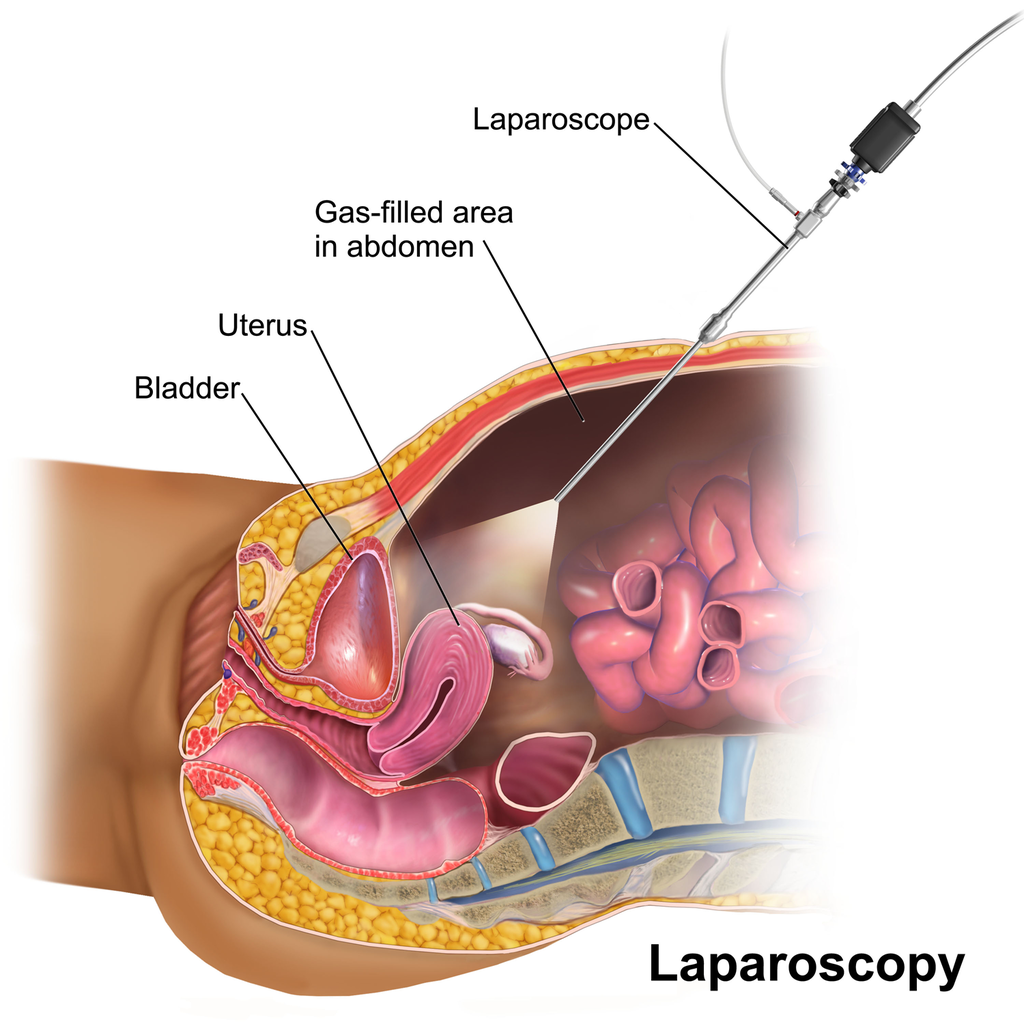What is Diagnostic Laparoscopy?
Diagnostic laparoscopy is a minimally invasive surgical procedure used to examine the reproductive organs for any abnormalities or issues that may be affecting fertility. Through a small incision near the belly button, a camera (laparoscope) is inserted to view the uterus, ovaries, and fallopian tubes. This procedure helps diagnose conditions like endometriosis, fibroids, and blocked fallopian tubes, providing valuable insights for fertility treatments.
Why is Diagnostic Laparoscopy Performed?
- Minimally Invasive Procedure: Diagnostic laparoscopy is a minimally invasive surgery used to investigate unexplained infertility, chronic pelvic pain, and recurrent miscarriages.
- Direct Observation of Reproductive Organs: During the procedure, a laparoscope (camera) is inserted through small incisions in the abdomen to provide a clear view of the uterus, ovaries, and fallopian tubes.
- Identifying Fertility Issues: Laparoscopy helps diagnose conditions like endometriosis, fibroids, ovarian cysts, pelvic adhesions, and other abnormalities that can impact fertility.
- Fallopian Tube Evaluation: It allows the doctor to examine the fallopian tubes for blockages, which can prevent conception.
- Treatment during Procedure: In some cases, laparoscopy can be used to treat minor conditions, such as removing cysts or unblocking fallopian tubes, at the same time.
- Comprehensive Fertility Assessment: This procedure provides essential insights into the health of the reproductive organs, enabling the creation of a more accurate treatment plan for enhancing fertility.
- Improved Conception Chances: By identifying and addressing underlying issues, diagnostic laparoscopy can improve the chances of successful pregnancy.
Benefits of Diagnostic Laparoscopy
- Minimally Invasive: Diagnostic laparoscopy requires only small incisions, reducing pain and recovery time compared to traditional open surgery.
- Quick Recovery: The minimally invasive nature of the procedure allows patients to return to their normal activities within a shorter time frame.
- Accurate Diagnosis: Laparoscopy provides a clear, direct view of the pelvic organs, allowing for a more precise diagnosis of underlying issues that may not be visible through other imaging methods.
- Combination of Diagnosis and Treatment: In many cases, diagnostic laparoscopy can be both diagnostic and therapeutic, allowing for the removal of cysts, adhesions, or correcting other fertility-related issues during the same procedure.
- Increased Fertility Chances: By addressing conditions like endometriosis, fibroids, and tubal blockages, laparoscopy improves the chances of natural conception or the success of assisted reproductive technologies.
- Minimal Scarring: Since the incisions are small, scarring is minimal, making the recovery process smoother and reducing aesthetic concerns.
- Higher Success Rates for IVF: Patients who undergo laparoscopy to treat fertility issues often have higher success rates with in vitro fertilization (IVF) treatments.
- Enhanced Understanding of Reproductive Health: By exploring the reproductive organs firsthand, laparoscopy provides invaluable insight into conditions that could be affecting fertility.
Procedure of Diagnostic Laparoscopy
- Preparation for the Procedure:
- The procedure usually starts with a pre-operative consultation to assess the patient’s health and confirm that laparoscopy is the right approach.
- Patients may be asked to fast for 6-8 hours before the procedure to prevent complications during anesthesia.
- Administering Anesthesia:
- Diagnostic laparoscopy is typically performed under general anesthesia, ensuring the patient is asleep and comfortable throughout the procedure.
- Small Incisions and Insertion of the Laparoscope:
- The surgeon makes small incisions, usually near the belly button, to insert a laparoscope (a long, thin tube with a camera).
- The camera sends real-time images to a monitor, allowing the surgeon to examine the pelvic organs.
- Carbon Dioxide Gas Insufflation:
- Carbon dioxide gas is introduced into the abdomen to inflate the area, providing a clearer view of the organs.
- Examination of Organs and Diagnosis:
- The surgeon inspects the ovaries, fallopian tubes, uterus, and surrounding areas to identify conditions such as cysts, adhesions, fibroids, endometriosis, or any blockages.
- Treatment of Identified Issues:
- If abnormalities are detected, such as cysts, adhesions, or endometrial tissue, the surgeon may remove or treat them during the same procedure to enhance fertility.
- Closing the Incisions:
- After the examination (and any necessary treatment), the small incisions are closed using sutures or medical adhesive. The procedure typically takes 30 minutes to an hour.
Why Choose India for Diagnostic Laparoscopy?
- Affordable Treatment: India offers significant cost savings compared to Western countries without compromising on the quality of care.
- Expert Care: India's fertility clinics and surgeons are highly skilled, offering state-of-the-art facilities.
- Shorter Waiting Times: You can schedule the procedure promptly, minimizing wait times compared to other countries.
FAQs for Diagnostic Laparoscopy
- What is diagnostic laparoscopy?
- It’s a minimally invasive surgical procedure used to examine the organs inside the abdomen and pelvis, providing a clear diagnosis of conditions like endometriosis, fibroids, and ovarian cysts.
- Is diagnostic laparoscopy painful?
- Generally, patients experience minimal pain due to the small incisions. Any discomfort is usually managed with medication and subsides quickly.
- How long does the procedure take?
- The procedure typically takes between 30 minutes to an hour, depending on the complexity of the issue being investigated.
- What are the risks of diagnostic laparoscopy?
- While rare, possible risks include infection, bleeding, injury to surrounding organs, or anesthesia complications. However, these are minimal with skilled surgeons.
- What conditions can be diagnosed with diagnostic laparoscopy?
- It can diagnose conditions like endometriosis, pelvic inflammatory disease, fibroids, ovarian cysts, and uterine abnormalities.
- Is diagnostic laparoscopy done under general anesthesia?
- Yes, it’s typically performed under general anesthesia, ensuring that the patient is completely unconscious and pain-free during the procedure.
- How long does recovery take after laparoscopy?
- Most patients recover quickly, with many returning to normal activities within 2-5 days. Full recovery typically takes a week or two.
- Can laparoscopy be used for treatment?
- Yes, laparoscopy not only helps in diagnosis but can also be used to treat certain conditions, such as removing cysts or adhesions during the same procedure.
- Is laparoscopy a better option than traditional surgery?
- Yes, laparoscopy is preferred for its minimally invasive nature, shorter recovery time, and reduced risk of complications compared to traditional open surgery.
10. How soon can I get pregnant after diagnostic laparoscopy?
- Many women experience improved fertility after treatment of conditions like endometriosis or blocked fallopian tubes with laparoscopy. Your doctor will guide you on the ideal timeline.



